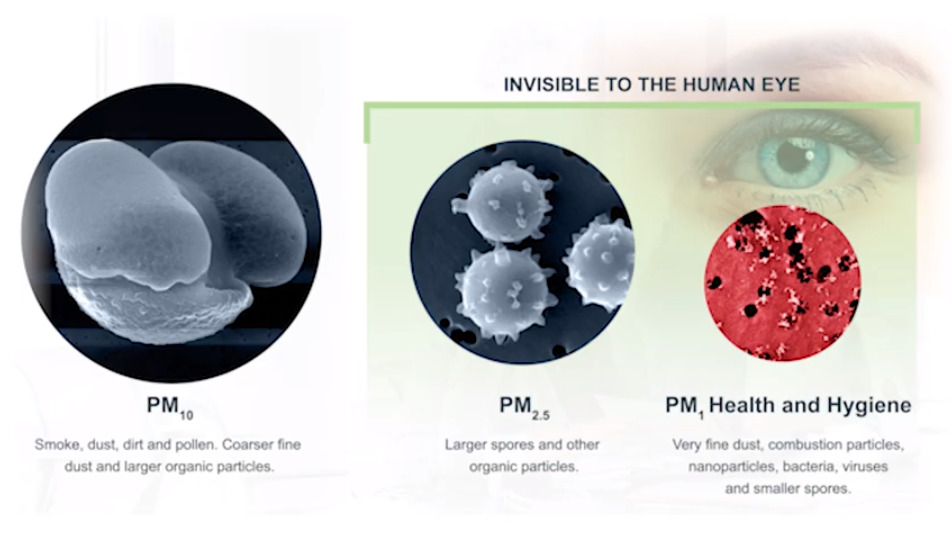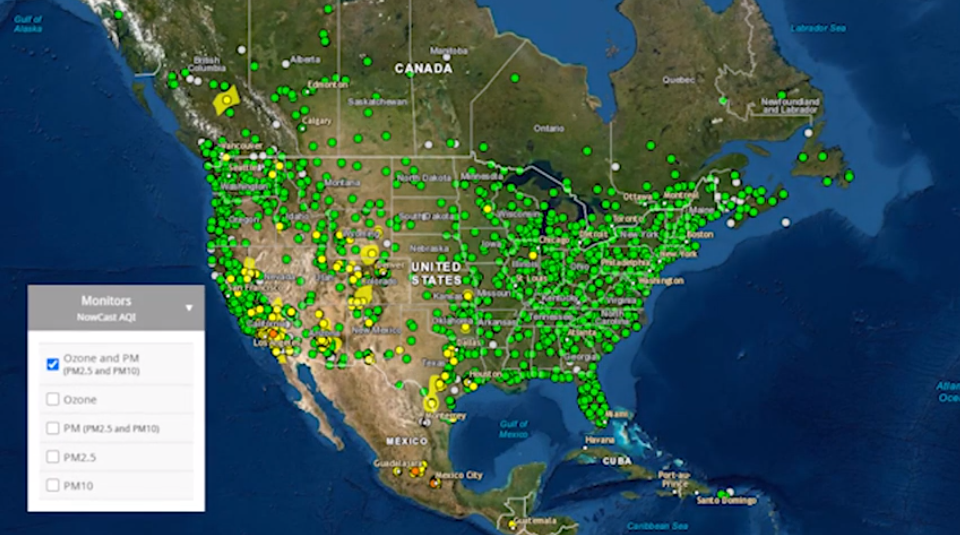Congress passed the Clean Air Act in 1970. [Video] Camfil USA Air Filter Expert Discusses 2021 State of the Air Report, air filtration experts from Camfil discuss the findings of the 2021 State of the Air Report, which has been published each year since 2000 by the American Lung Association using data generated as a result of the Clean Air Act.
“The American Lung Association has spent many years creating awareness for the importance of clean air and done significant research to quantify the impacts of dirty air,” says Kevin Wood, the Vice President of Sales and Marketing at Camfil USA. Mr. Wood has been in the air filtration industry for over three decades.
What is the State of the Air Report?
The Clean Air Act required the Environment Protection Agency (EPA) to set limits for six prominent outdoor air pollutants (particulate matter, nitrogen oxides, sulfur dioxide, ozone, lead, and carbon monoxide).
The State of the Air Report, first published in 2000 by the American Lung Association, breaks down air quality data so anyone can see the quality of air in their community. Since then, air pollution monitoring equipment has been updated and installed across the United States. The most recent State of the Air Reports now focus on nationwide data on ozone and PM2.5 (particulate matter smaller than 2.5 microns in diameter), two of the most dangerous outdoor air pollutants.
(The full report can be accessed here.)
According to Mr. Wood, highlighting data on these two pollutants is particularly useful for three main reasons:
To outline the importance of both particle and gas phase air pollution.
To provide context on new evidence which suggests the impact of pollution on human health, including areas such as child brain development, respiratory conditions, cardiovascular disease, diabetes, and cancer.
Identify the geographical areas where people are at the most risk for health damage due to high exposure to air pollution. (2021’s report indicates that 135 million Americans across 217counties live in areas where the air contains unhealthy levels of pollution for part or all of the year. This is over 40% of the population.)
What is PM2.5?

PM2.5 refers to particulate matter that is smaller than 2.5 microns in diameter. (For scale, a human hair has a diameter of approximately 100 microns.) These particles are inhalable, and can cause serious damage to lung tissue.
What Are the Effects of PM2.5?
A large body of scientific literature has linked particulate matter to the following health risks, according to the EPA:
premature death in people with heart or lung disease
nonfatal heart attacks
irregular heartbeat
aggravated asthma
decreased lung function
increased respiratory symptoms, such as irritation of the airways, coughing or difficulty breathing
Particulate matter also has disastrous effects on the environment, including depleting soil nutrients, lowering the pH of natural water sources, damaging forests and crops, and affecting the diversity of ecosystems.
What is Ground-Level Ozone?
Ozone is a molecule made up of three oxygen atoms. Unlike the oxygen molecules we breathe, which are made up of two oxygen atoms, ozone is highly unstable and reactive. Naturally formed ozone is an essential component of the earth’s upper atmosphere, forming a miles-thick layer that protects terrestrial life from harmful ultraviolet light.
However, ground level ozone presents a major hazard to human health. Ground level ozone is formed by reactions between nitrogen oxides and hydrocarbons (which are also referred to as VOCs, or volatile organic compounds). These reactions are facilitated by heat and sunlight.

What Are the Effects of Ground-Level Ozone?
Ozone is an unstable molecule, which means that it easily reacts with other molecules, including those in the human body.
According to the American Lung Association, the following groups are at higher risk of being harmed by ozone:
children and teenagers
adults over the age of 65
people with existing lung conditions, including asthma, and COPD (chronic obstructive pulmonary disease)
people who work and exercise outdoors
Long-term exposure to ozone has been linked to premature death and lower infant birth weight. Short-term exposure to ozone can cause:
shortness of breath, wheezing, and coughing due to constriction of tracheal muscles
increased susceptibility to respiratory infections and pulmonary inflammation
asthma attacks
aggravation of chronic lung conditions
What Factors May Impact Air Quality In the Future?
According to Camfil’s air filtration experts, there are three prominent factors that may impact air quality in the future.
Climate change. Because heat and sunlight facilitate the chemical reactions that create ground-level ozone, increased temperatures and longer periods of sunlight are likely to lead to higher readings of ground-level ozone.
Wildfires. The smoke from wildfires affects more than just the west coast where the fires predominantly take place. Wildfire smoke can travel thousands of miles, shrouding towns and cities across the country with both large and very small particles. (Read more about the effects of wildfire smoke and how to protect yourself against them.)
COVID-19 and future viruses. Respiratory droplets infected with COVID-19 virus particles are known to be 2.5 microns or smaller, and most disease exposure occurs via airborne routes. Traditional levels of air filtration in buildings and homes is not adequate to stop the circulation throughout a building if asymptomatic carriers occupy the space.
Overall, it’s important to remember that even in areas that aren’t exposed to dangerous levels of outdoor pollution, pollution is likely to rise in the future. (Indoor air is up to five times as polluted as outdoor air. Find out more here.)
How to Protect Yourself from Outdoor Air Pollution
Camfil’s air quality experts have provided the following suggestions:
Employers should make sure that their work environments have proper air handling units and appropriate filtration systems. Filters should maintain their rated efficiency the entire time in use. Where filtration efficiency may be limited by minimal space in an air handling unit, systems should be supplemented with in-room air purifiers, such as Camfil’s City M.
If ozone is of particular concern in your area, additional filter stages in the air handling unit may be required to accommodate both molecular (or gas) filters and particulate filters.
Due to the continuing risk of COVID-19, upgrading to MERV15 or higher filtration should be considered when planning improvements or upgrades to your building’s current ventilation system.
Due to varying needs, budgets, local regulations, and existing infrastructure, there is no one size fits all approach to upgrading your building’s air filtration system. Contact a Camfil representative for help determining the correct solution for you.
About Camfil Clean Air Solutions
For more than half a century, Camfil has been helping people breathe cleaner air. As a leading manufacturer of premium clean air solutions, we provide commercial and industrial systems for air filtration and air pollution control that improve worker and equipment productivity, minimize energy use, and benefit human health and the environment. We firmly believe that the best solutions for our customers are the best solutions for our planet, too. That’s why every step of the way – from design to delivery and across the product life cycle – we consider the impact of what we do on people and on the world around us. Through a fresh approach to problem-solving, innovative design, precise process control, and a strong customer focus we aim to conserve more, use less and find better ways – so we can all breathe easier.
The Camfil Group is headquartered in Stockholm, Sweden, and has 33 manufacturing sites, six R&D centers, local sales offices in 30 countries, and about 4,800 employees and growing. We proudly serve and support customers in a wide variety of industries and in communities across the world. To discover how Camfil USA can help you to protect people, processes and the environment, visit us at www.camfil.us/
##
Media Contact:
Lynne Laake
Camfil USA Air Filters
T: 888.599.6620
F: Friend Camfil USA on Facebook
T: Follow Camfil USA on Twitter
Y: Watch Camfil Videos on YouTube
L: Follow our LinkedIn Page







